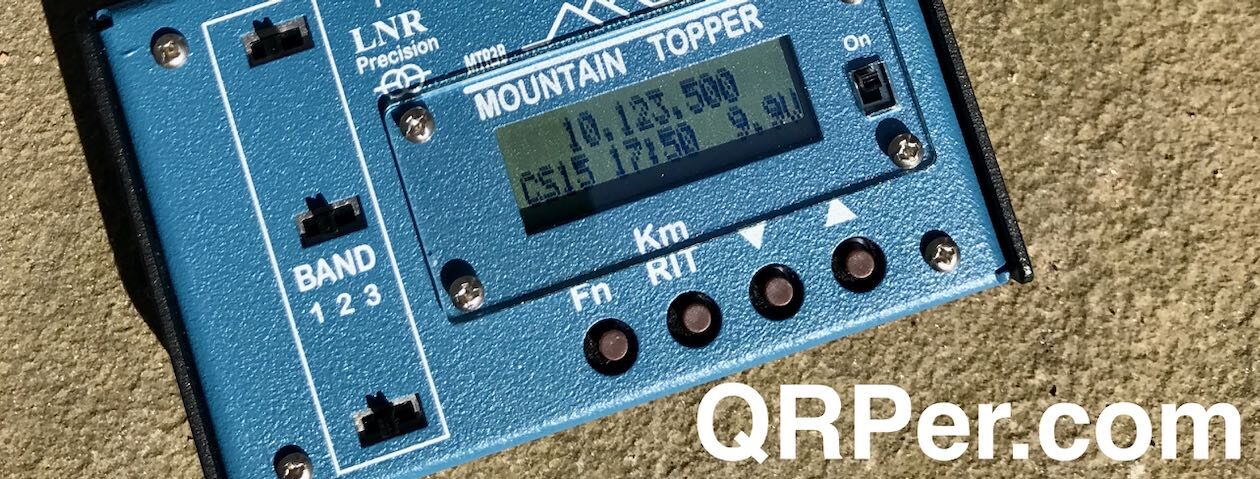 Many thanks to Brain who asks:
Many thanks to Brain who asks:
“Thomas, I read your review of the Xiegu G90 transceiver on the SWLing Post and it seemed your overall impression was positive. I bought a G90 some time ago and love it. So far, I’ve only been listening with it, but hope to pass both my Technician and General class license exams this month. Curious why you stated that you sold it after your review. Could you shed a little light on that decision? Inquiring mind here. Thanks so much for your articles and videos.”
Good question, Brian! And bravo on tackling both your Tech and General class license exams in one go! We’re rooting for you!
The short answer is it had more to do with my own personal preferences than the radio’s performance and specifications.
As I stated in my review, I think the G90 is a great value and certainly a capable field radio. It must be one of the most popular portable transceivers in the Parks On The Air (POTA) program (along with the Yaesu FT-891) which is certainly worth noting.
You would be hard-pressed to find a transceiver with the features of the G90–including an excellent internal ATU and 20 watts output–for less than $600 and the G90 is currently only $425 US.
If you have a limited budget, and like the overall specs and features of the G90, you really can’t go wrong.
Personal preferences

When I review a product, I do my best not to allow my own personal preferences to cloud my judgement. I try to imagine how I’d review a piece of gear based on being in a number of other operators’ shoes.
One of my pet peeves, in fact, is to read a product review and find that the reviewer is indulging in nit-picking and hyper-focusing on particular characteristics, features, and design shortcomings. I want to hear the negatives for sure, but I also want to feel comfortable that the reviewer’s personal preferences didn’t cloud their overall objectivity.
I also value real-word, hands-on experience in a product review.
After purchasing the Xiegu G90, I took it to the field and made a number of POTA activations with it. It never disappointed. I also used it in the shack for a couple of months. I found that the display was quite useful, easy to read, and it had most of the functions and features I tend to use in the field. Never once did I feel it was under-performing or not meeting my expectations. If anything, the G90 exceeded my expectations.
In fact, I remember telling some of my friends that the G90 was a “keeper” after taking it on a few field outings. But after my review, I found that I rarely reached for it when heading to the field. Why? Turns out some of my own personal preferences surfaced:
Memory Keying
Most of my other QRP transceivers have CW memory keying and/or voice memory keying. The Xiegu G90 does not.
For POTA and SOTA activators, voice and CW memory keying is a useful feature, as it frees you to do other things like log, eat a sandwich, or talk to others while calling CQ. In other words, it can help with your “work flow.” If you’ve watched my activation videos, you might have noticed that I tend to use memory keying for calling CQ and, sometimes, for sending 73s.
When walking out the door to hit the field, I tend to grab my transceivers that have memory keying functions.
Audio
The G90 has an excellent internal speaker for use in the field. With that said–and this is hard to describe–I find its overall audio characteristics a little “harsh” and unrefined. I found that, over time, the G90 gave me a bit of listener fatigue during long sessions in the field or shack. That’s not to say it has bad audio–it’s just not as good as some of my other transceivers.
Key clicks
ARRL lab testing shows that the G90 has key clicks in transmit. In fact, the key clicks were bad enough in their testing that they suggested never using the G90 with an external amplifier. For those of us who don’t use amplifiers, this may never be a factor at all. Also, Xiegu retailers sell affordable external amplifiers to pair with the G90, so I must assume it doesn’t affect all amplifiers negatively. If I’m being honest with myself, I think this was another nail in the coffin.
In summary…
I knew the G90 would collect dust, so I sold it.
However, I know operators who love the G90 so much, they sold their pricier rigs after buying a G90. I even know operators who own two G90s: one for the shack, one for the field. With a total investment of only $850, I see why they made that choice.
The G90 just wasn’t for me though.
A final note about the new Xiegu GSOC

Ironically, I was asked by Radioddity to evaluate the new Xiegu GSOC controller only a couple weeks after I sold my original G90. Since the GSOC is designed to pair with the G90 , they had to send me another G90 on loan for the evaluation.
If you have a G90 and have considered purchasing the GSOC, I would strongly urge you to read my latest review of the GSOC.
In short: I can’t recommend it. The G90 is a much better radio without the GSOC controller, in my opinion.
Do you own the G90?
Have you even owned or operated the Xiegu G90? What do you consider to be its pros and cons? Please comment!
 (Source: Tim McDonough via the Four State QRP Group)
(Source: Tim McDonough via the Four State QRP Group)

 It uses the familiar pick and pluck foam, although in two layers.
It uses the familiar pick and pluck foam, although in two layers.































